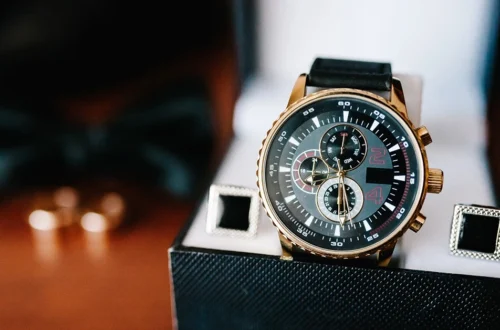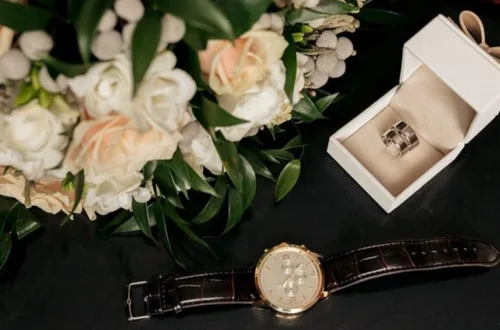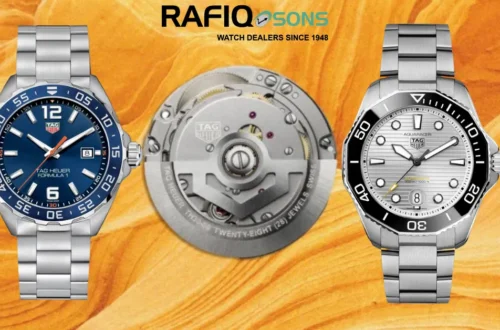A watch is just a piece of metal without a movement at its heart. Indeed its appearing design attracts the watch buyers but the actual watch collectors also look at the watch movements before doing any purchase. With a high-end mechanical movement the price of the watch is to really get high. The Swiss movements are also referred to as calibre and the number of jewels determines its grade.
If you have been collecting watches for a while or are even a new watch enthusiast then you would definitely know that Swiss mechanical movements are best in the watch industry. Though the quartz movement is a specialty of Japanese movement manufacturers, they also produce some high quality mechanical movements and even state of the art solar powered quartz movements.
The major difference between a mechanical movement and a quartz movement is that a mechanical movement is powered by a spring that when winded stores kinetic energy to power the movement, on the other hand a quartz movement is powered by a battery that pulses electric current through a quartz crystal to power the movement.
Coming to the Swiss luxury watch makers they have a huge pedigree in creating high-end mechanical and automatic movements. The renowned Swiss luxury watchmakers Rolex, Omega and TAG Heuer use some state of the art mechanical movements in their watch line.
Rolex
As everyone knows that Rolex is a luxury Swiss watch brand that creates timepieces with outstanding quality, design and precision with complimenting high price tags. Rolex labels its movements as “Superlative Chronometer Officially Certified”. The depth behind the term comes after a series of rigorous testing done on movements. The stringent testing process makes Rolex movements reliable, robust and precise, proving the Rolex watches to be number one in the industry. In 2015, Rolex made a leap in Swiss lever escapement. The lever is a crucial component of the movement that harnesses the power stored in the spring. With the introduction of their trademark Calibre 3255, Chronergy escapement has boosted the movement efficiency by 15% which results in longevity of power reserve in the movement. In the same year, Rolex improvised their method which resulted in enhanced precision of their calibres up to +2/-2 seconds per day. It is double than the officially required chronometer standards.
Omega
Omega watches also hold a high luxury watch status among the watch collectors. The Swiss company was found in 1903 and was named after an innovative mechanical watch movement that was introduced in 1894. Considering its naming after a radical watch movement, since beginning the Omega has serious concerns about developing and improving watch movements in house. This dedicated effort of the watchmaker results in their movements being reliable and persistent performance. The company is extremely focused in research and development of its calibres with ground-breaking improvements. The Co-Axial movement is one of their remarkable innovations. The Co-Axial escapement has significantly reduced the friction between moving parts within the movement. Altogether the technology reduces the wear and tear of the moving parts and further increases the working life of the movement with minimal servicing. Reduced friction not only lengthens the life of the movement but also makes it effortless for the movement to maintain precision.
TAG Heuer
TAG Heuer is famously known for creating value focused chronographs that are admired by many watch collectors. In 2013, TAG Heuer introduced its Calibre 1969. The in house produced movement was innovative by having a vertical clutch replacing the traditional oscillating pinion. The technological enhancement increased the seconds-hand precision while measuring the time-laps. Shortly after in 2015, TAG Heuer launched its newer generation of movements labelled as Calibre Heuer 01. This newer generation of calibres offered higher precision chronograph performance. This newer Heuer 01 was offered in luxurious yet affordable, Carrera Heuer 01 range. In comparison to their quartz counterparts these mechanical movements are built with intense labour, expertise and artistic precision.
Seiko
Seiko watch are not less than a marvel from with Japanese perfection. The Japanese watch manufacturer is known for producing some great automatic movements mostly used in their watch range. Seiko’s Spring Drive movement is designed to wind the mainspring by the wrist movement of the watch wearer. Today many automatic movements work on similar principals but earlier when it was launched it was a state of the art innovation by Seiko. The movement basically harnesses variety of methods in parallel working. The rotor winds the main spring, and electromagnetic energy, a balance wheel along a quartz oscillator, all gather up to give extreme precision in movement working.
Breitling
Breitling is one of the few companies that uses movements made by other companies and as well produces its own chronograph movements for specific watch ranges within the brand. The Swiss luxury watch brand uses ETA chronograph movements made under the name of Valjoux Chronographs. Breitling got motivated by the other Swiss luxury watch manufacturers to design and produce their own movements. By this method they would be able to maintain their quality manufacturing and lifespan of the timepieces. In the pursuit, Breitling introduced its B01 chronograph movement for their chronograph watch range. It has Breitling’s escape wheel design which improves the shock absorbing ability of the movement and also increases the refresh rate of the watch.
Patek Philippe
Patek Philippe produces a hand-wound mechanical movement for its exclusive Grand Compilations collection. The movement is also of a high grade with its beautiful split-second lever and perpetual calendar feature. The ultimate artistic quality and precision makes it enviable among the watch collectors. In comparison to the other Swiss made movements it is sleek and small with 496 parts. The movement is produced in limited numbers which makes it tough to get hands on.

















